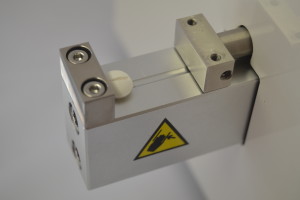 When first acquiring tablet hardness testers, a common question our installation engineers get asked is ‘what is the difference between constant speed and constant force?’
When first acquiring tablet hardness testers, a common question our installation engineers get asked is ‘what is the difference between constant speed and constant force?’
While either option is permissible with regards to pharmacopoeias and compliance regulations, both test methods can produce different results, which can lead to confusion if the difference is not understood.
Constant force is when the tablet hardness tester jaw is moved slowly until it touches the sample (tablet) and then the pressure to the sample is increased at linear 20 Newton/sec increments until it breaks. At this point the hardness is then recorded.
Constant speed is where the test jaw moves at a constant speed from the very beginning (up to max 3.5mm/s) without pause/adjustment until it breaks the tablet.
Both options are permitted by pharmacopoeias, because both are valid methods of recording / testing.
However, because they are both different test methods, they understandably give different final results (although both are correct for each test type). For example, the time it takes to break a tablet at constant speed could be a lot faster than using constant force, so the result will be different. If you have a tablet with a nominal of 80N, it might take 4 seconds to break using constant force, but the same tablet will break much quicker if you use a constant speed method of 3.5 mm/s.
Unless a specific testing method specifies a specific test type, it is entirely up to the individual/company what method is used. But! Care should be given to ensure that all departments throughout the company use the same test method if results are compared, otherwise, they will not match.
